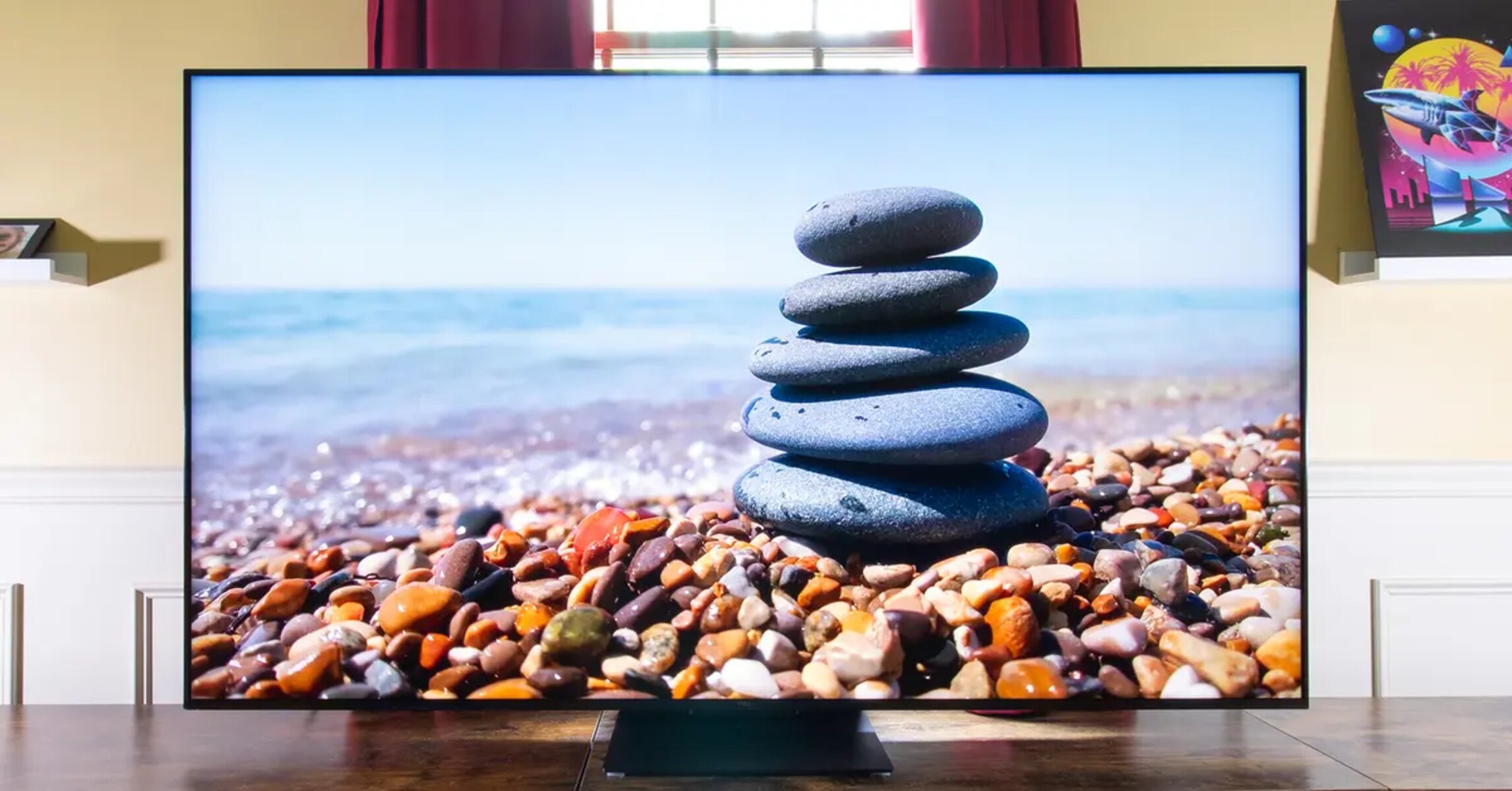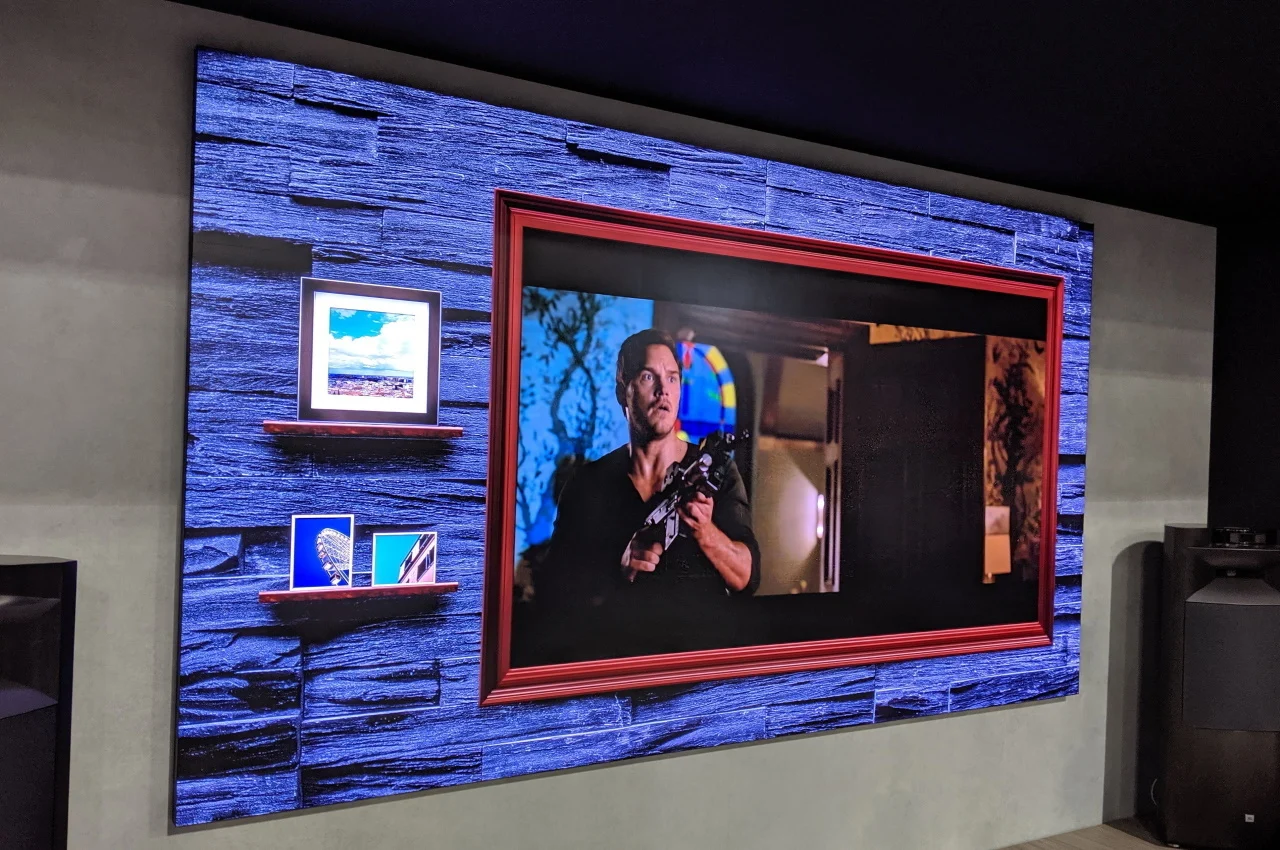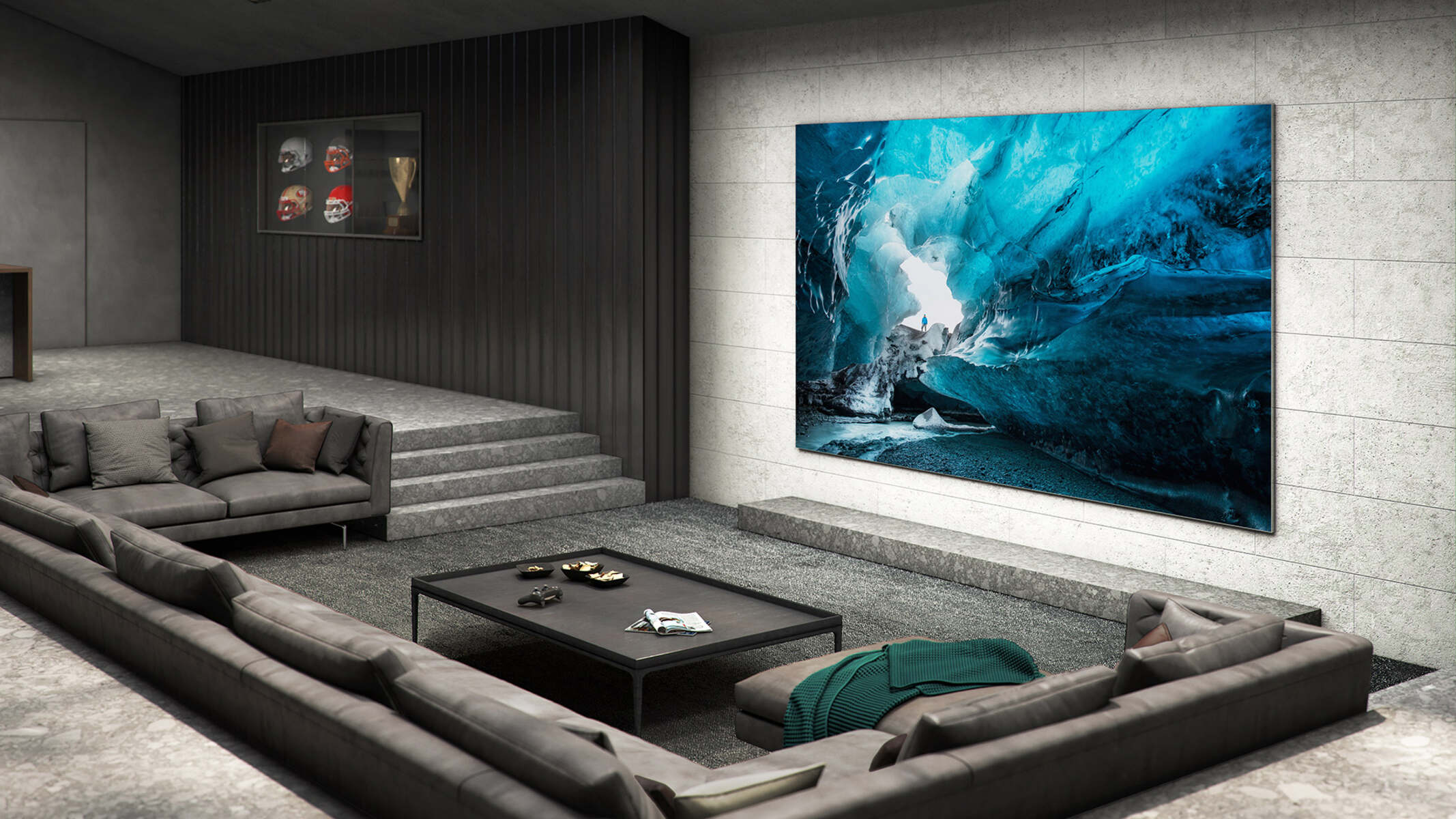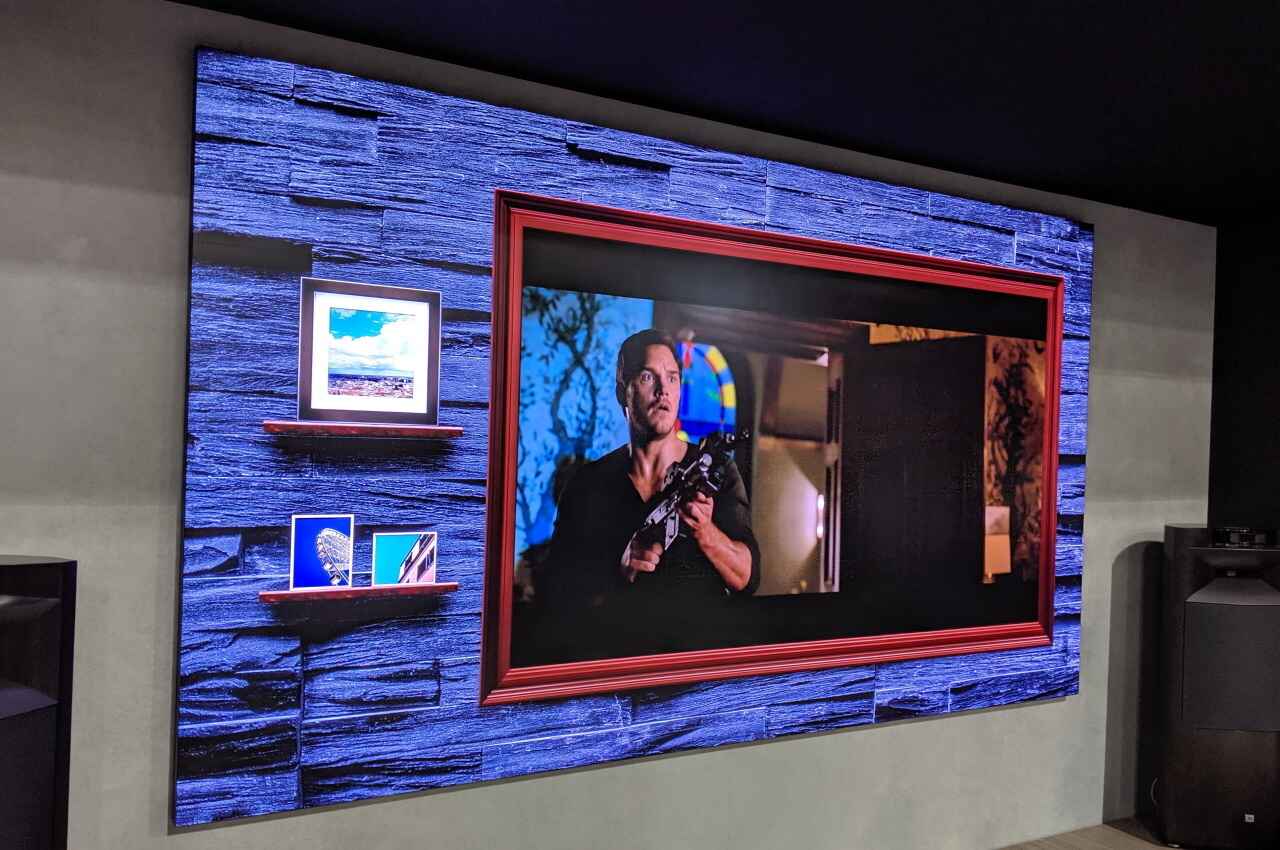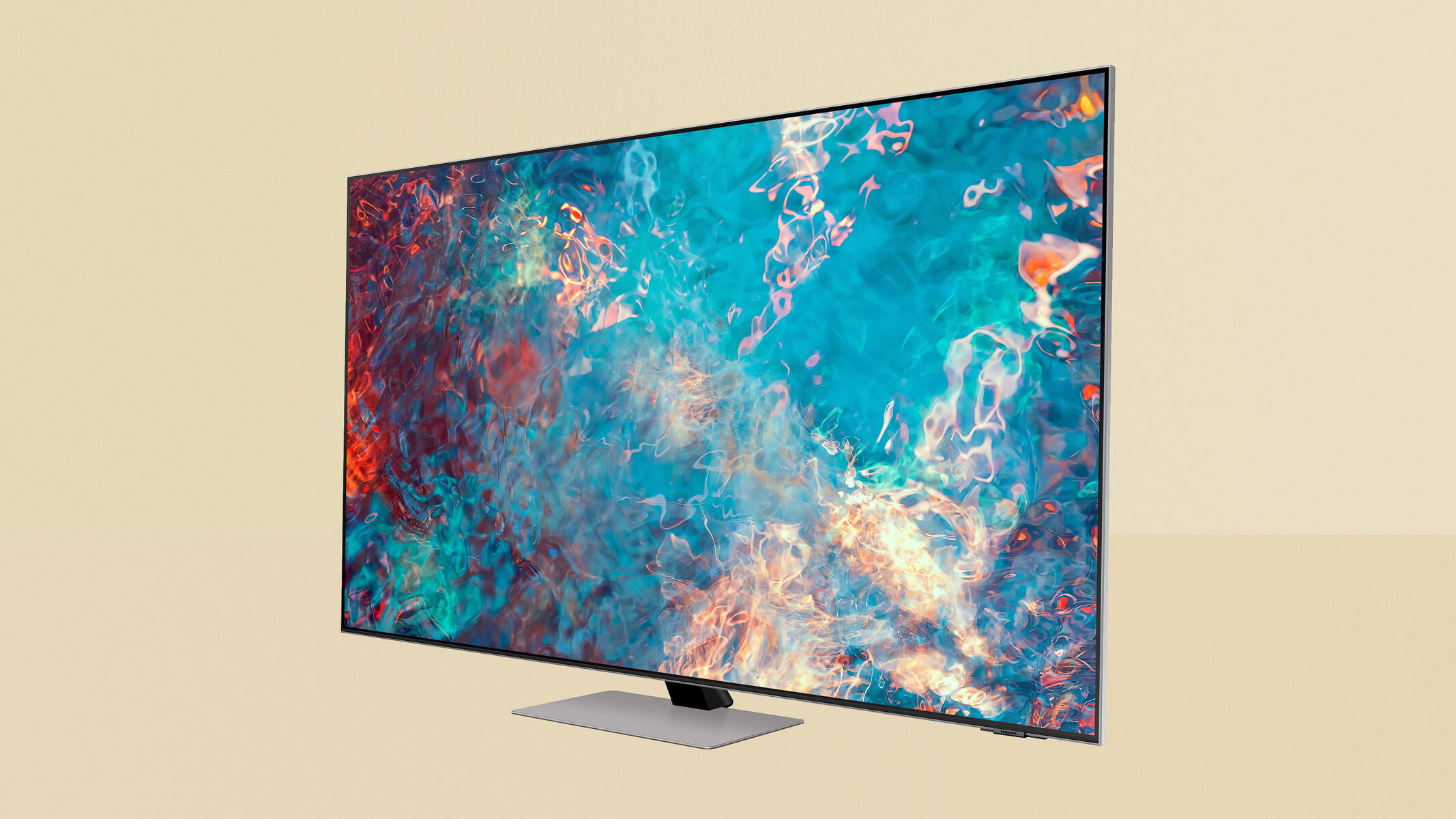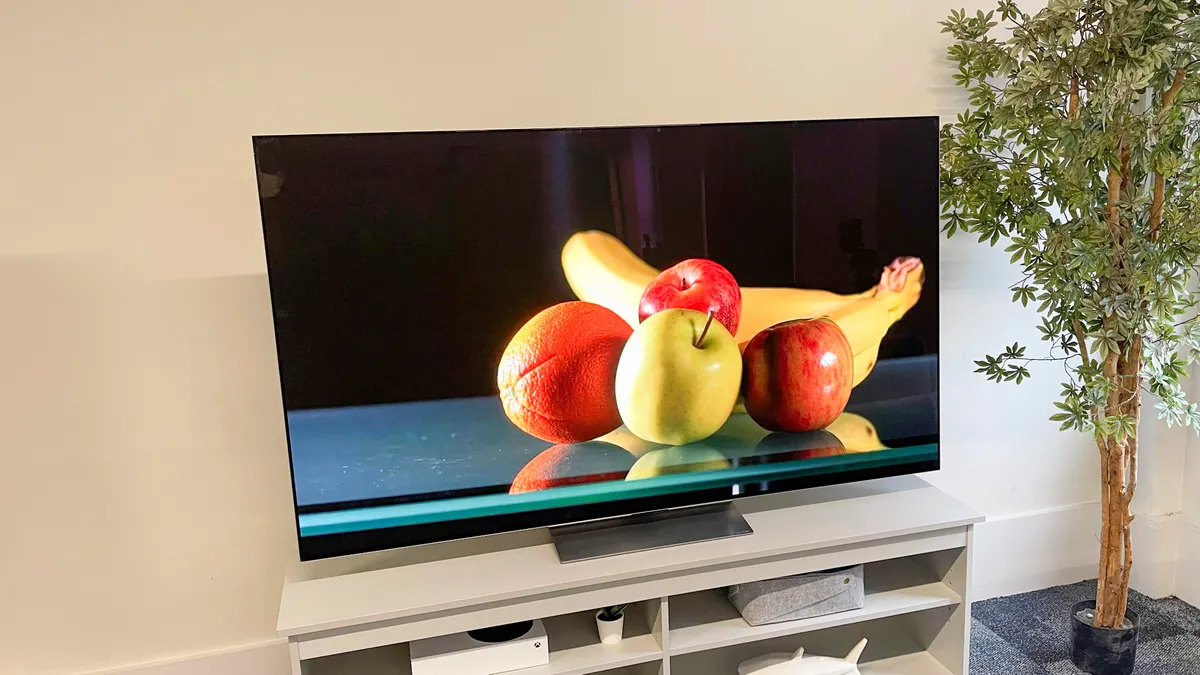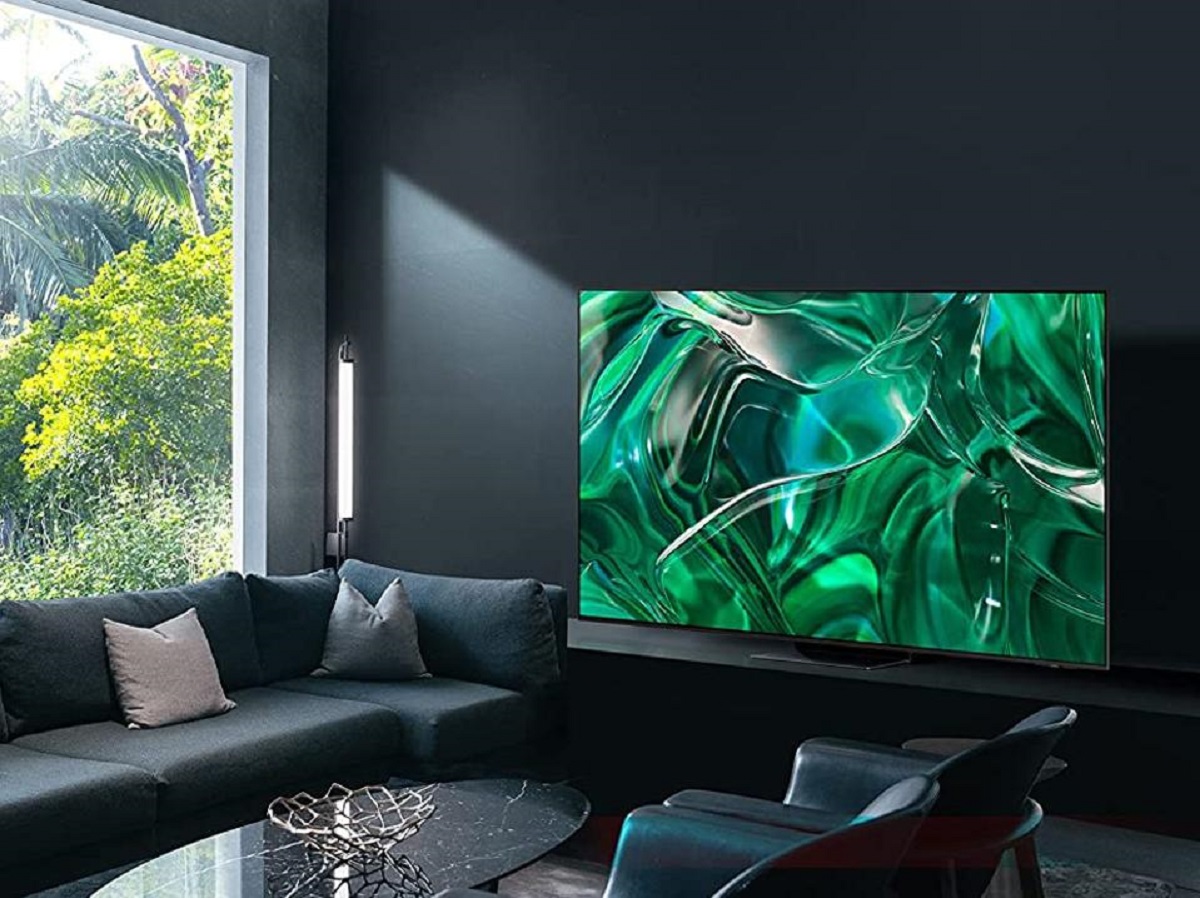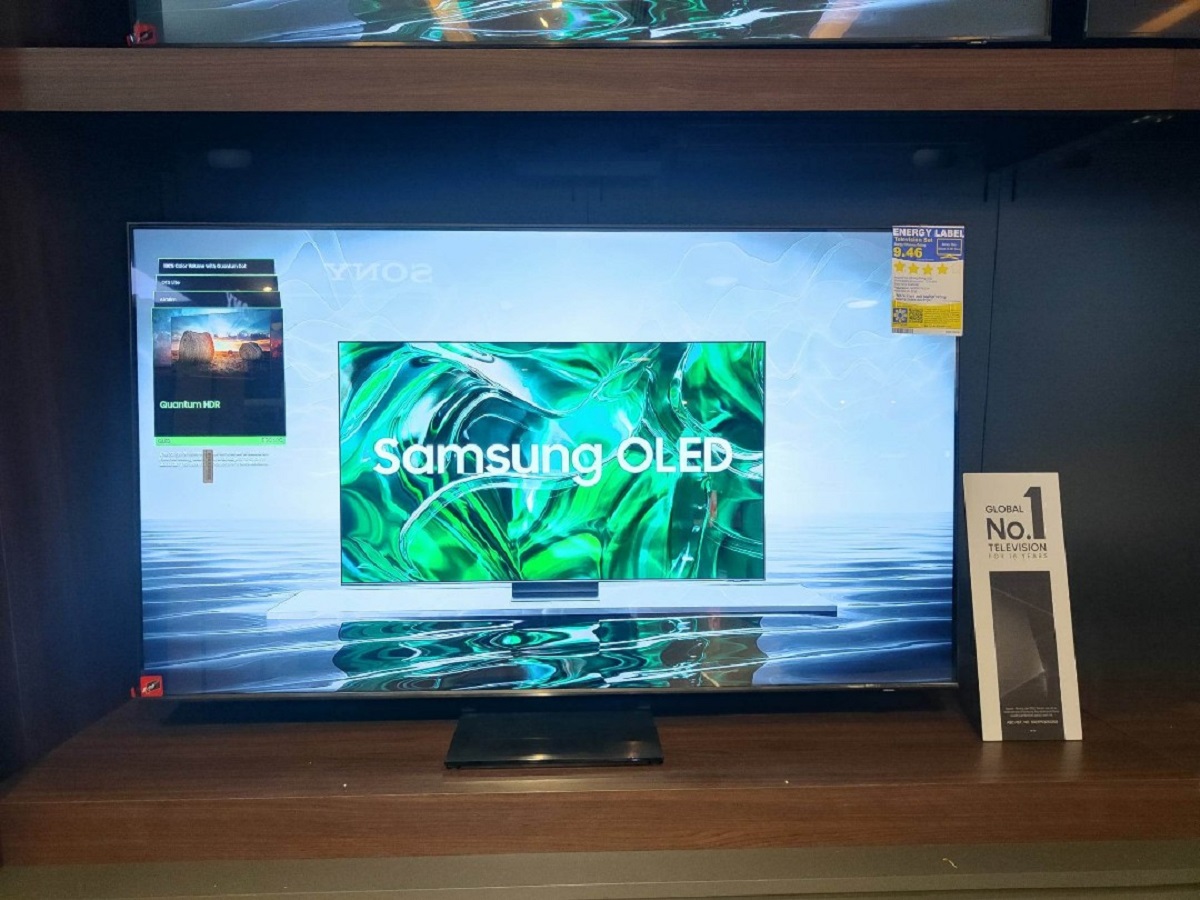Introduction
Welcome to the world of Samsung QLED TVs. These cutting-edge televisions incorporate advanced technologies to provide an immersive viewing experience. One such technology is Local Dimming Full Array, which enhances contrast, black levels, and overall picture quality.
In this article, we will explore how Local Dimming Full Array works on Samsung QLED TVs, its benefits, limitations, and how it compares to other backlight technologies. Whether you’re a tech enthusiast or a casual viewer looking to upgrade your TV, understanding this technology will help you make an informed decision.
Local Dimming Full Array is a technique used in the backlighting of QLED TVs. It aims to improve the contrast ratio and black levels by dynamically controlling the brightness of individual zones or regions of the screen. Unlike traditional edge-lit TVs, which have LEDs placed along the edges of the display panel, QLED TVs with Local Dimming Full Array have a grid of LEDs positioned behind the entire screen surface.
This advanced backlighting system enables precise control over the brightness levels of different areas on the screen. By selectively dimming or brightening specific zones, QLED TVs can achieve deeper blacks and brighter whites, resulting in a more detailed and lifelike image. This localized dimming technique also helps to minimize light bleeding between adjacent areas, further enhancing the contrast and overall picture quality.
One of the key advantages of Local Dimming Full Array is its ability to improve the performance of High Dynamic Range (HDR) content. HDR content is designed to deliver a wider range of colors and contrast compared to standard dynamic range content. With Local Dimming Full Array, QLED TVs can accurately reproduce the intricate details of HDR content, ensuring that you can enjoy the full visual impact of movies, TV shows, and games with vibrant colors and stunning contrast.
However, like any technology, Local Dimming Full Array has its limitations. One common issue is the “blooming” effect, where bright areas of the screen can bleed into adjacent dark areas, resulting in a hazy or washed-out appearance. While Samsung QLED TVs employ advanced algorithms to mitigate this effect, it may still be noticeable in certain scenes.
It’s also worth noting that the benefits of Local Dimming Full Array are more pronounced on QLED TVs with a full array backlight as compared to edge-lit QLED models. Edge-lit TVs have the LEDs placed along the edges of the screen, limiting their ability to control the light in different zones. Therefore, if you prioritize the benefits of Local Dimming Full Array, it is advisable to opt for a QLED TV with a full array backlight.
In the next sections, we’ll delve deeper into the benefits of Local Dimming Full Array on Samsung QLED TVs, compare it to other backlight technologies, and provide a comprehensive analysis. So, let’s explore the world of Local Dimming Full Array and how it can elevate your viewing experience.
What is Local Dimming Full Array?
Local Dimming Full Array is a technology used in the backlighting system of Samsung QLED TVs. It is designed to enhance the contrast, black levels, and overall picture quality of the television. This technology utilizes a grid of LEDs positioned behind the entire screen surface.
Unlike edge-lit TVs, which have LEDs placed along the edges of the display panel, QLED TVs with Local Dimming Full Array have LEDs distributed across specific zones or regions on the screen. These zones can vary in size and number depending on the model of the TV. By controlling the dimming or brightening of these individual zones, QLED TVs can achieve more precise and localized control over the brightness levels.
The concept behind Local Dimming Full Array is to dynamically adjust the brightness of different areas on the screen to improve the contrast ratio and black levels. When a scene contains both dark and bright elements, the LEDs behind the dark areas are dimmed, allowing for deeper blacks and enhanced shadow details. Simultaneously, the LEDs behind the brighter areas are brightened, resulting in improved highlights and overall picture quality.
This localized dimming technique not only enhances the contrast and black levels but also helps to minimize light bleeding between adjacent areas. Light bleeding, also known as blooming, refers to when the brightness of a bright area spills over into the neighboring dark areas, causing a halo effect. By keeping the light within their designated zones, Local Dimming Full Array reduces blooming and provides a more crisp and defined image.
Furthermore, QLED TVs with Local Dimming Full Array technology are optimized for High Dynamic Range (HDR) content. HDR content is designed to deliver a wider range of colors and contrast, resulting in a more realistic and immersive viewing experience. By accurately controlling the brightness levels in different zones, QLED TVs can faithfully reproduce the intricate details of HDR content, showcasing vibrant colors and sharper contrast.
It is important to note that the performance of Local Dimming Full Array can vary depending on the specific model of Samsung QLED TV. Higher-end models may have more zones and advanced algorithms to deliver superior image quality, while lower-end models may have fewer zones and less precise control over the brightness levels.
In summary, Local Dimming Full Array is a technology that plays a crucial role in improving the visual experience on Samsung QLED TVs. By utilizing a grid of LEDs distributed across specific zones, this technology enables precise control over the brightness, resulting in enhanced contrast, black levels, and overall picture quality. Whether you’re watching movies, playing games, or enjoying HDR content, Local Dimming Full Array ensures that every frame comes to life with stunning clarity and immersive details.
How does Local Dimming Full Array work?
Local Dimming Full Array technology is a key feature in Samsung QLED TVs that enhances contrast, black levels, and overall picture quality. In this section, we will delve into the workings of this technology and explore how it achieves these improvements.
Local Dimming Full Array technology utilizes a grid of LEDs positioned behind the entire screen surface of the QLED TV. These LEDs are distributed into specific zones or regions on the screen. The number and size of the zones can vary depending on the model of the TV, with higher-end models offering more precise control over the backlight.
The technology works by dynamically adjusting the brightness of individual zones based on the content being displayed. When a scene contains a mix of dark and bright areas, the LEDs behind the dark zones are dimmed, allowing for deeper blacks and improved shadow detail. At the same time, the LEDs behind the bright zones are brightened to enhance highlights and overall picture quality.
By selectively dimming specific zones, Local Dimming Full Array technology enhances the contrast ratio of the television. Contrast ratio refers to the difference between the brightest and darkest sections of an image. By achieving deeper blacks and brighter whites, the technology creates a more pronounced difference between these extremes, resulting in a more vibrant and lifelike image.
This localized dimming technique also helps to minimize light bleeding or blooming between adjacent areas. Light bleeding occurs when the brightness of a bright area spills over into the neighboring dark areas, causing a halo effect. With Local Dimming Full Array, the LEDs are controlled within their respective zones, reducing blooming and providing a more defined and clear image.
In addition to enhancing contrast and black levels, Local Dimming Full Array technology contributes to the overall picture quality of the QLED TV. By controlling and adjusting the brightness of different zones, it ensures accurate reproduction of High Dynamic Range (HDR) content. HDR content is designed to display a wider range of colors and contrast, offering a more realistic and immersive viewing experience. With Local Dimming Full Array, QLED TVs can faithfully reproduce the intricate details of HDR content, showcasing vibrant colors and sharper contrast.
It is important to note that the effectiveness of Local Dimming Full Array technology can vary depending on the specific model of the Samsung QLED TV. Higher-end models usually have more zones and advanced algorithms to deliver superior image quality, while lower-end models may have fewer zones and less precise control over the backlight.
In summary, Local Dimming Full Array technology improves contrast, black levels, and overall picture quality by selectively dimming and brightening specific zones behind the screen. By achieving deeper blacks, brighter whites, and reducing blooming, this technology creates a more vibrant and lifelike image. Additionally, it accurately reproduces HDR content, showcasing vibrant colors and enhanced contrast for a truly immersive viewing experience.
Benefits of Local Dimming Full Array on Samsung QLED TV
Samsung QLED TVs equipped with Local Dimming Full Array technology offer several significant benefits that enhance the overall viewing experience. In this section, we will explore these benefits in detail.
Improved contrast ratio: Local Dimming Full Array technology plays a crucial role in improving the contrast ratio of Samsung QLED TVs. By selectively dimming specific zones, the technology achieves deeper blacks and enhances the brightness of bright areas. This creates a more pronounced difference between the darkest and brightest parts of the image, resulting in a richer and more vivid visual experience. Whether you’re watching movies, sports, or playing games, the improved contrast ratio ensures that every detail is brought to life with exceptional clarity.
Deeper black levels: One of the standout benefits of Local Dimming Full Array is its ability to achieve deeper black levels. By dimming the LEDs behind dark zones, QLED TVs with this technology can effectively eliminate the backlight bleeding that can occur in edge-lit TVs. This results in truly deep and inky blacks, providing improved shadow detail and enhancing the overall depth and realism of the image. Whether you’re watching a dark and suspenseful scene or playing a game with atmospheric lighting, the deeper black levels ensure an immersive and captivating visual experience.
Enhanced HDR performance: Local Dimming Full Array technology is particularly beneficial for displaying High Dynamic Range (HDR) content. HDR content is designed to showcase a wider range of colors and contrast, providing a more lifelike and immersive experience. QLED TVs with Local Dimming Full Array can accurately reproduce the intricate details of HDR content, ensuring that you can enjoy the full impact of vibrant colors, stunning highlights, and realistic shadows. Whether you’re watching a HDR movie or playing a game designed with HDR in mind, this technology ensures that you can fully appreciate the visual nuances and details of the content.
More accurate local dimming: Local Dimming Full Array technology enables more precise control over the backlight. With the ability to individually dim specific zones, QLED TVs can achieve more accurate local dimming, resulting in a higher level of detail and sharpness. This technology helps to prevent light bleeding between adjacent areas, ensuring that the brightness is precisely controlled within each zone. The more accurate local dimming allows for better rendering of subtle nuances in both dark and bright scenes, enhancing the overall picture quality and delivering a more immersive viewing experience.
In summary, Local Dimming Full Array technology on Samsung QLED TVs brings a range of benefits, including improved contrast ratio, deeper black levels, enhanced HDR performance, and more accurate local dimming. Whether you’re watching movies, playing games, or enjoying HDR content, these benefits ensure that you can enjoy a visually stunning and engaging viewing experience.
Limitations of Local Dimming Full Array on Samsung QLED TV
While Local Dimming Full Array technology offers many benefits for Samsung QLED TVs, it is important to be aware of its limitations. In this section, we will explore the two primary limitations of this technology.
Blooming effect: One of the limitations associated with Local Dimming Full Array is the potential occurrence of a blooming effect. Blooming refers to the halo or glow that can appear around bright objects on a dark background. This effect happens when the brightness of a bright zone spills over into the adjacent dark zones, causing a hazy or washed-out appearance. Although the sophisticated algorithms employed by Samsung attempt to minimize this effect, it can still be noticeable in certain scenes, especially when viewing content with high contrast between bright and dark areas. While blooming may not be a significant issue for many viewers, it is worth considering if you are sensitive to this type of visual artifact.
Limited effect on edge-lit TVs: Another limitation of Local Dimming Full Array technology is its limited effect on edge-lit QLED TVs. Edge-lit TVs have LEDs positioned along the edges of the display panel, rather than distributed across the entire screen surface. This configuration significantly restricts the control and precision of the local dimming zones. As a result, the benefits of Local Dimming Full Array technology, such as improved contrast ratio and precise local dimming, are less pronounced on edge-lit QLED models. If you prioritize the benefits of Local Dimming Full Array, it is advisable to opt for a QLED TV with a full array backlight instead.
It is essential to consider these limitations while weighing the benefits of Local Dimming Full Array technology. The blooming effect may impact your viewing experience in certain scenes, although the overall improvement in contrast and black levels may outweigh this drawback for many viewers. Additionally, edge-lit QLED TVs may not fully realize the potential benefits of Local Dimming Full Array due to their limited backlight configuration.
It is worth noting that advancements in technology are continually being made to address and minimize these limitations. Manufacturers, including Samsung, are consistently improving their local dimming algorithms and backlight configurations to enhance the overall performance of QLED TVs.
In summary, while Local Dimming Full Array technology offers significant benefits, it comes with a couple of limitations. The blooming effect may be noticeable in certain scenes, and the benefits may be limited on edge-lit QLED models. By understanding these limitations, you can make an informed decision based on your viewing preferences and priorities.
Comparison with Other Backlight Technologies
When it comes to backlight technologies, Local Dimming Full Array stands out as a significant advancement in enhancing the picture quality of Samsung QLED TVs. In this section, we will compare Local Dimming Full Array with other popular backlight technologies, including edge-lit LED TVs, direct-lit LED TVs, and OLED TVs.
Edge-lit LED TVs: Edge-lit LED TVs have LEDs placed along the edges of the display panel. While these TVs are slim and lightweight, they often lack the precise control over the backlight that Local Dimming Full Array offers. Edge-lit TVs usually have limited zones or even a single zone for dimming. This results in inferior contrast ratios, compromised black levels, and a higher likelihood of blooming. In contrast, Local Dimming Full Array in Samsung QLED TVs offers more precise control over the backlight, leading to deeper blacks, improved shadow detail, and reduced blooming.
Direct-lit LED TVs: Direct-lit LED TVs feature a grid of evenly distributed LEDs behind the screen surface, similar to Local Dimming Full Array. However, unlike Local Dimming Full Array, direct-lit LEDs do not have individual dimming control for each zone. This means that the entire screen is dimmed or brightened together, resulting in less precise control over the backlight and limited improvement in contrast ratios. Local Dimming Full Array technology, on the other hand, allows for selective dimming of specific zones, achieving deeper blacks, enhanced contrast, and better overall picture quality.
OLED TVs: OLED (Organic Light-Emitting Diode) TVs utilize a self-emissive technology where each pixel generates its own light. Unlike LED-based technologies, OLED pixels can individually turn on or off, resulting in perfect black levels and infinite contrast ratios. Additionally, OLED TVs offer wide viewing angles and excellent color reproduction. However, in terms of local dimming, where specific zones can be dimmed or brightened, OLED TVs do not have the precise control that Local Dimming Full Array offers. This can impact the ability to achieve the same level of precision in deep blacks and shadow details that Local Dimming Full Array provides on Samsung QLED TVs.
In summary, Local Dimming Full Array technology in Samsung QLED TVs outperforms edge-lit and direct-lit LED TVs in terms of contrast ratios, black levels, and overall picture quality. While OLED TVs excel in achieving perfect black levels and infinite contrast ratios, they do not have the same level of precise local dimming as Local Dimming Full Array technology. The choice between these technologies ultimately comes down to personal preferences and priorities. If you prioritize precise local dimming, enhanced black levels, and superior picture quality, Samsung QLED TVs with Local Dimming Full Array technology offer a compelling choice.
Conclusion
Local Dimming Full Array technology is a game-changer for Samsung QLED TVs, offering numerous benefits that enhance the overall viewing experience. By selectively dimming and brightening specific zones on the screen, this technology improves contrast ratios, achieves deeper black levels, enhances HDR performance, and provides more accurate local dimming. Whether you’re watching movies, playing games, or enjoying HDR content, Local Dimming Full Array ensures that every frame is displayed with exceptional clarity and vibrant colors.
However, it’s important to be aware of the limitations of this technology. The potential occurrence of a blooming effect and the limited effect on edge-lit QLED TVs should be taken into consideration when evaluating the benefits of Local Dimming Full Array.
When compared to other backlight technologies, such as edge-lit LED TVs, direct-lit LED TVs, and OLED TVs, Local Dimming Full Array showcases its superiority. Its precise control over the backlight sets it apart from edge-lit and direct-lit LED TVs, resulting in improved contrast ratios and black levels. While OLED TVs excel in achieving perfect black levels, Local Dimming Full Array technology offers more precise local dimming in Samsung QLED TVs.
In conclusion, Local Dimming Full Array is a significant technological advancement that significantly enhances the picture quality of Samsung QLED TVs. It delivers deeper black levels, improved contrast ratios, better HDR performance, and more accurate local dimming. While it may have some limitations, this technology offers a visually stunning and immersive viewing experience. If you prioritize superior picture quality and an enhanced viewing experience, Samsung QLED TVs with Local Dimming Full Array technology are an excellent choice.







